Panorama of the sickle of Pluto
Here is such a gorgeous shot of the receding Pluto was published yesterday on the NASA website.
A click opens a full-sized image. The New Horizons device took this picture 15 minutes after the maximum rapprochement with Pluto on July 14, from a distance of 18 thousand kilometers. The width of the panorama is 1250 kilometers. In the backlight, an amazing layered structure of the atmosphere is visible.
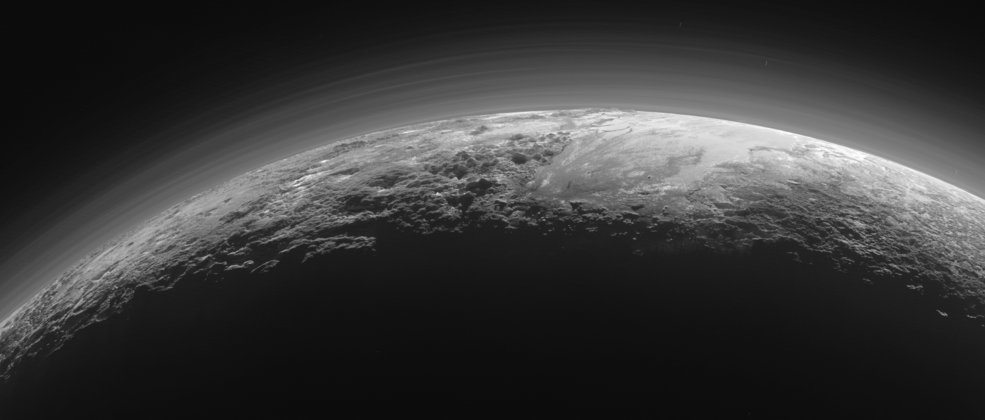
Pluto shows an amazing variety of surface types - ice cliffs up to three and a half kilometers high, frozen nitrogen flows and smooth plains. In the rarefied, but unusually extended atmosphere of Pluto, more than a dozen layers of haze can be counted. The width of the landscape in this image is 380 kilometers. In this frame, 185 kilometers wide, we see near-surface fog cut through by the long shadows of mountains and hills:
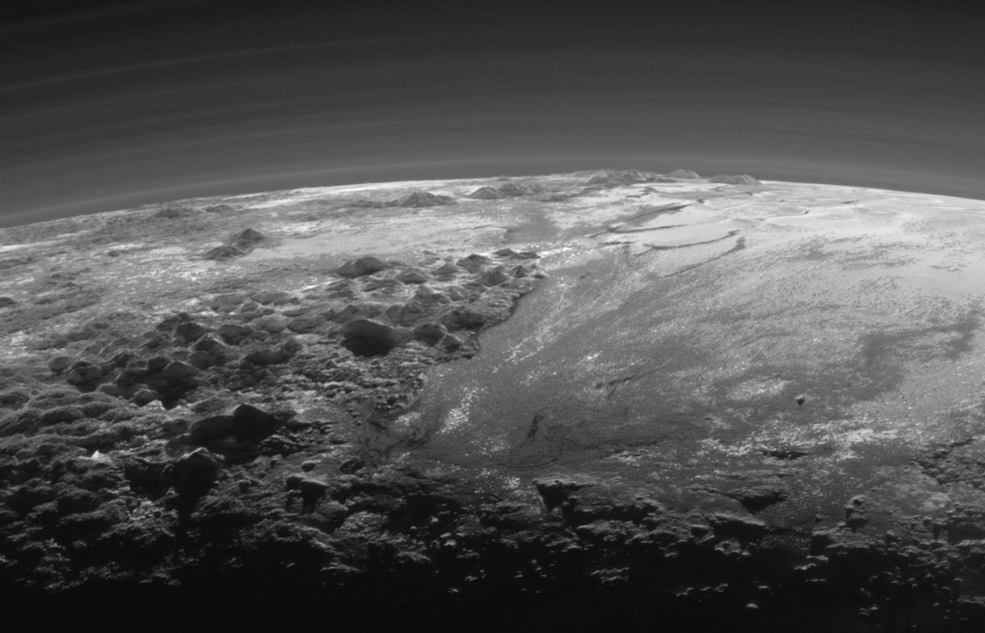
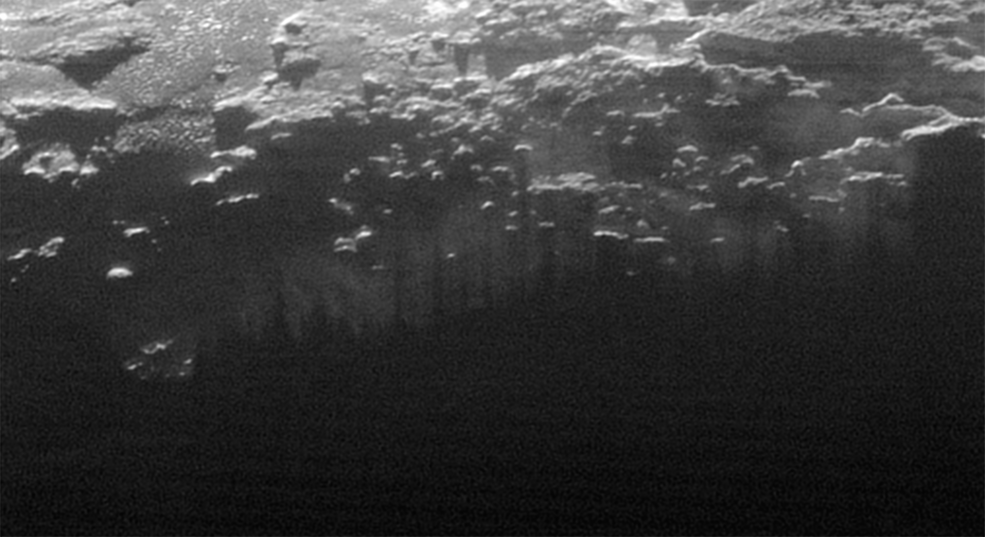
Apparently on Pluto there is a local analogue of the terrestrial "water cycle in nature." Only instead of water there is nitrogen. Nitrogen ice flows down from the mountainous terrain on the right side of the image through a valley 3 to 8 kilometers wide marked by red arrows. The blue arrows indicate the edge of the ice stream spreading over the plain on the left side of the image.
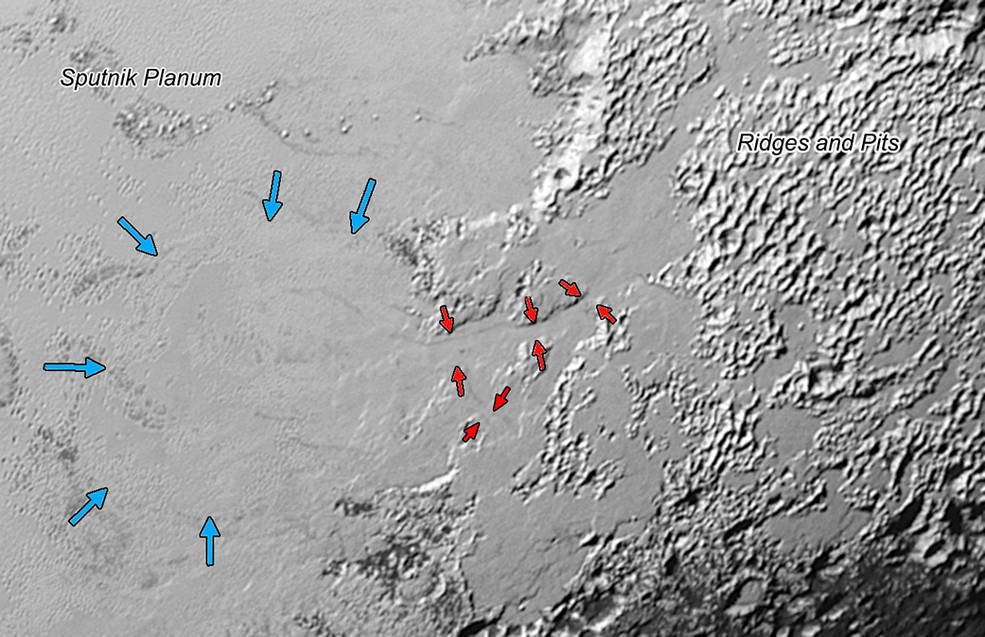
The same area also fell into the sickle image under oblique sunlight. If you stretch this fragment so that the perspective coincides with the previous picture, the contrast increases and you can consider additional details of the ice flows.
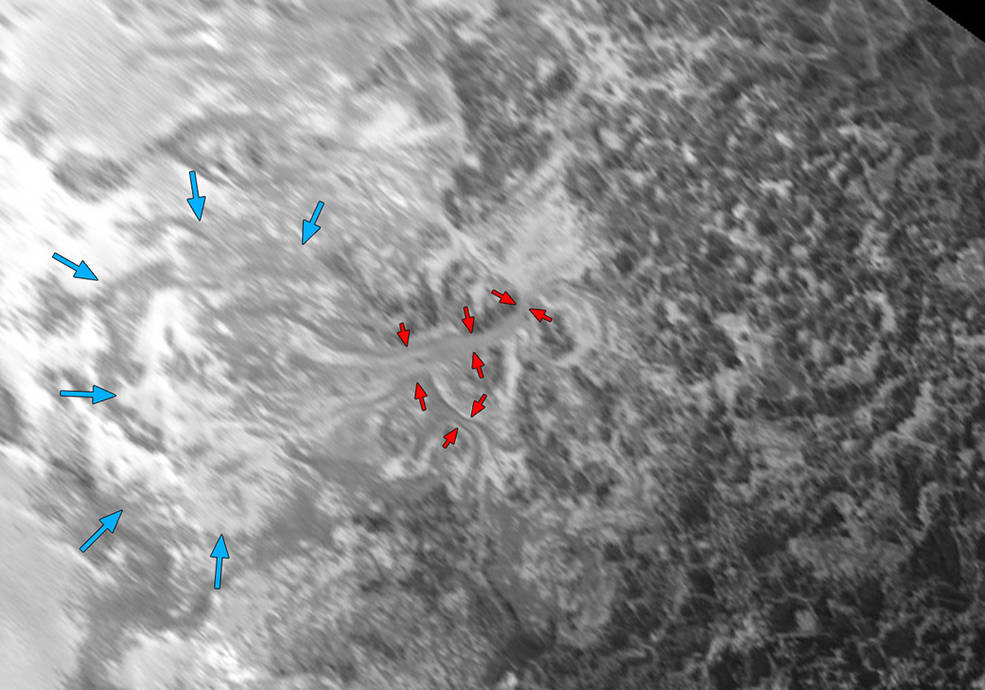

Color version
The user of the unmannedspaceflight.com forum with the nickname Ian R added colors to this shot using the available data from the MVIC tool. To be honest, I didn’t really like the result - Pluto came out somehow cold. I twisted the color levels a little to my taste, so that the palette looked like pleasant warm shades of the popular “heart-shaped” picture .
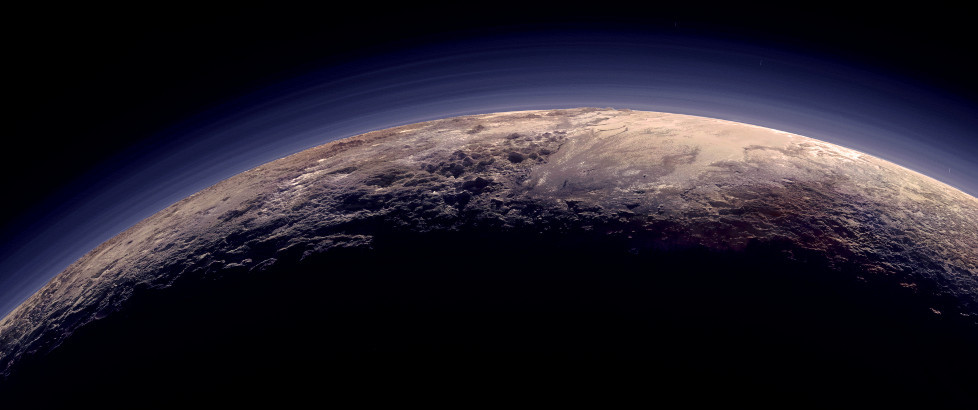

Pluto shows an amazing variety of surface types - ice cliffs up to three and a half kilometers high, frozen nitrogen flows and smooth plains. In the rarefied, but unusually extended atmosphere of Pluto, more than a dozen layers of haze can be counted. The width of the landscape in this image is 380 kilometers. In this frame, 185 kilometers wide, we see near-surface fog cut through by the long shadows of mountains and hills:


On Earth, you can see a similar picture flying over the morning forest.

Apparently on Pluto there is a local analogue of the terrestrial "water cycle in nature." Only instead of water there is nitrogen. Nitrogen ice flows down from the mountainous terrain on the right side of the image through a valley 3 to 8 kilometers wide marked by red arrows. The blue arrows indicate the edge of the ice stream spreading over the plain on the left side of the image.

The same area also fell into the sickle image under oblique sunlight. If you stretch this fragment so that the perspective coincides with the previous picture, the contrast increases and you can consider additional details of the ice flows.

Very similar to terrestrial glaciers.

